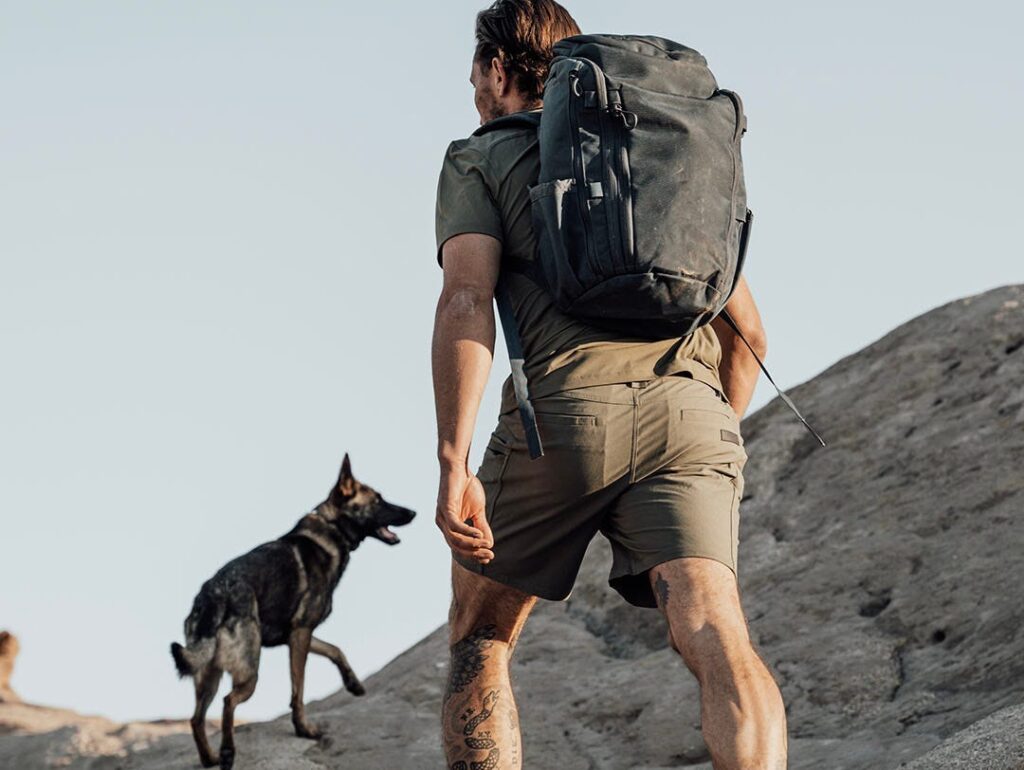- Rucking, or carrying a weighted backpack, can help build lean muscle, said a former Navy SEAL.
- Rucking workouts help develop versatile athleticism and mental toughness to tackle any challenge.
- To get the most out of rucking, start with lighter weight and don't overdo the intensity.
If you want to get leaner, stronger, and tougher in a single workout, put some weight on your back and get moving, according to a former Navy SEAL.
Walking, hiking or running with a weighted backpack is known as rucking. It's a tough workout that can help you build endurance while also gaining muscle, said Michael O'Dowd, tactical expert for the fitness brand Ten Thousand with nine years of experience as a SEAL.
"With rucking, you don't get skinny, you build muscle while you shed fat. It allows you to run without losing muscle mass," he told Insider.
While rucking is a go-to exercise for military fitness, you don't have to be a SEAL to try it. Start with just a few pounds — less than 10 is good for beginners —and work your way up to get the benefits of better stamina and strength at home.
Rucking combines the benefits of strength training with cardio
Unlike gym sessions that involve a controlled environment and specific focus, rucking prompts your body to adapt to the environment, according to O'Dowd.
Your body needs to tap into the muscles of your core, back, and legs to move the weight.
It provides the cardiovascular benefits of aerobic exercise, along with resistance training to allow you to get stronger and more muscular at the same time, he said.
For him and other members of elite military teams, versatile fitness is key — his typical routine involves hiking, swimming, carrying heavy loads such as rucking and mixed martial arts (MMA) training. That's where Ten Thousand gear stands out, since it's designed to be useable for tough exercise in rugged conditions, he said of the brand he partners with. To him, the tactical shorts, developed with insights from members of the US Special Operations Forces, are convenient because they hold up to the huge variety of physical challenges he takes on.
"We don't know what the job is going to hold, whether it's hiking a mountain, swimming for kilometers," O'Dowd said. "This one pair of shorts does everything I do, and I don't have another pair of shorts like that."
You can build mental toughness by rucking
In additional to boosting muscle gains and overall stamina, rucking has major mental benefits for developing grit in the face of adversity, according to O'Dowd.
"Rucking is probably one of the hardest workouts on the planet. It's relentless. From step one, there's a mental toughness component," he said.
Carrying weight forces you to stay focused and make the conscious decision to keep moving even when it's uncomfortable, in contrast to a typical gym session where it's much easier to take a breather between sets and scroll on your phone.
O'Dowd said the ability to persist through challenging situations is a major focus of the infamously difficult course known as Basic Underwater Demolition SEAL training, or BUD/S.
He said that during his experience of most notorious segment of training called "Hell Week", a simple task prompted many recruits to give up. The severely sleep-deprived trainees were asked to complete a four mile run, which many of them tried to run as quickly as possible. However, instructors waiting at the finish line immediately told them to repeat the exercise, and many opted to quit on the spot rather than try the seemingly-impossible task of trying to go even faster while exhausted.
O'Dowd was overwhelmed by fatigue too, but had an epiphany that he didn't need to complete the run at his fastest-ever pace — he just needed to stick with it. That mindset got him through SEAL training, and you can practice it in a rucking workout by focusing on one step at a time.
"Who cares how fast you go, the mission is just to go," he said.
How to safely try a rucking workout — start light, and go slow
Anyone can benefit from incorporating rucking workouts into their fitness routine, O'Dowd said.
However, to avoid injury and excessive fatigue, it's best to start with a small amount of weight. Even 10 pounds can be "pretty brutal," he said.
While you can buy a specialized ruck, you can also load a few books or water bottles into a sturdy backpack to get started.
Try to make sure the load is as evenly distributed as possible, and tightly secured to your body. Then avoid the common mistake of leaning too far forward to offset the weight, and keep your hips underneath you, according to O'Dowd.
And too much rucking can be stressful on your body, so incorporate it once or twice a week so you have enough time to rest between sessions.
If you're newer to fitness in general, you may want to establish a solid running routine or even start walking regularly before you ruck, according to O'Dowd.
"Nobody needs to start with a crazy workout, it's the routine part that you need," he said. "Go for a walk, build up to a run, add some weight, add some push-ups."
